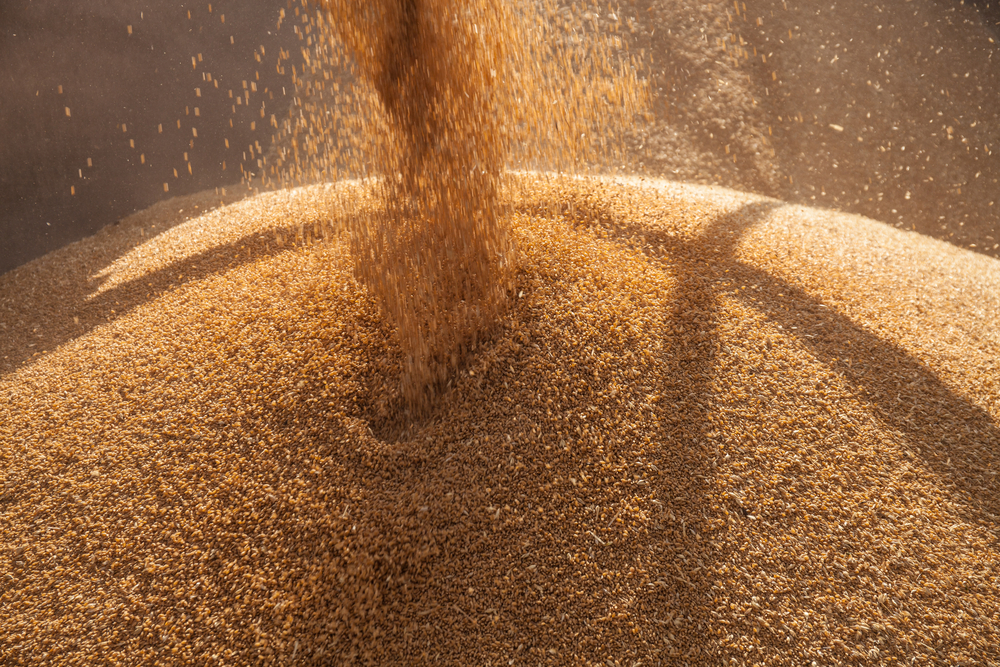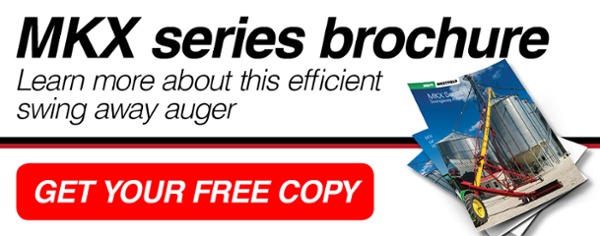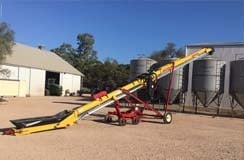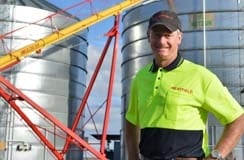Grain augers and conveyors are widely considered to be the quickest, easiest and most efficient way to move grain between transfer and storage points.
While both are designed to serve the same general purpose, there are some crops which are better suited to an auger compared to a conveyor and vice versa.
One such type of crop typically more suited to an auger is wheat.
In this blog post, the experts at Westfield take a look at why an auger is usually the ideal choice for handling wheat.
Wheat is a robust crop
The bulk grain handling sector “grew up” with grain augers. The majority of Australian wheat farmers are highly familiar with using them, whereas grain conveyors are a newer and more modern grain handling alternative offering a number of benefits. So it’s natural that more and more wheat farmers and grain producers are curious about whether it’s worthwhile to make the switch to using a conveyor.
By design, a grain conveyor minimises impact damage to grain during high capacity handling whilst still maintaining the value of delicate and high value commodities. A conveyor carries grain on a belt in contrast to an auger which physically pushes/pulls grain through the auger tube via the spiral flighting. Farmers who require a high seed grade will generally prefer to use a conveyor.
Depending on its end use, wheat may or may not considered to be a high value commodity nor a delicate one. Some wheat is destined to be low quality feed wheat and some will be high quality seed wheat.
Wheat is a monocotyledon seed, unlike dicotyledon seeds which have two seed halves. Dicotyledons, such as chickpeas and lentils, are more prone to damage during grain handling. These types of crops are therefore more suited to a conveyor.
Wheat is more robust and resistant to damage during handling, making augers a practical choice for wheat farmers whose wheat is destined for milling or the noodle market as kernel damage is hardly critical.
On the other hand, a conveyor may be the better option for a wheat farming operation which outputs very high tonnages. Conveyors have a longer service life under heavy workloads and have the versatility to be used for seed, fertiliser and legumes as well as wheat.
Augers can operate at higher angles with less length
Another factor which makes augers a good choice for most wheat farmers is the fact that they can operate comfortably at steeper angles when unloading. A conveyor is generally happiest at 25 degrees or less.
High capacity augers can push dry wheat through the flighting at 35 to 40 degrees, which is much higher than a conveyor can achieve. If a farmer has a tall silo, which is often the case with a wheat operation, a conveyor may not be able to manage it. An auger of the same length will have no trouble doing so.
Additionally, a conveyor needs to be up to 33% longer than an auger to load the same sized bin or silo. In situations where space is limited, an auger can be a more viable solution than a conveyor.
A point to consider - moisture content
Augers tend to cope better with grain that has a low moisture content as dry grain will always flow easier and faster through the flighting. For comparisons sake, conveyors require around half the horsepower of an auger.
An auger will always need more power to move grain with a high moisture content as the auger has to cope with the added friction.
Wheat farmers should always take into consideration their power requirements when purchasing an auger. If it’s likely they will be harvesting wheat with a moisture level of over 12%, they should opt for an auger with more horsepower so they have more versatility.
Tips for purchasing an auger for handling wheat
If you yourself are a wheat farmer, here’s some things to look out for in a high quality grain auger:
Durability
Augers should always be constructed to be durable. Look for thick tubing, high wearing steel as well as flighting with replaceable wear edges.
Capacity
Trucks are getting bigger and labour rates are rising. You need to be able to get trucks emptied and back out to the fields as quickly as you can. So go with an auger that’s up to the challenge and can unload at a rate the suits your operation.
Swing-away functionality
A well designed auger should be easily repositioned from silo to silo. Swing-away augers are a good choice as they allow you to get the truck into position easily, close to the auger. They are designed to remain hooked onto your tractor, so they are ideal for one person operations. The tractor does all the hard work using its hydraulics to raise and lower the auger. If a storm is coming, you don't want it to be a giant hassle to get the auger off the silo and down into the lowered position.
If you decide on an engine driven auger, it is best to choose a self-propelled model with a hydraulic lift to avoid unnecessary physical exertion.
Looking for further advice on using augers for handling wheat? Talk to Westfield.
Our expert team all come from farming backgrounds, so we have a real understanding of the importance of choosing the right grain handling equipment to meet your needs.
All of our grain augers are built tough, easy to use, have high capacity and are engineered from the ground up so you can get on with the job. Each auger is designed to handle a broad range of grain quality and moisture content to ensure your grain flows smoothly.
To find out more, simply click here to get in touch with us today.







